Focke Wulf FW-190A
Production Time 9 to 10 weeks
Shipment is by FedEx, UPS or DHL International Express Courier with a normal door-to-door delivery time worldwide of within 2-3 business days after dispatch. Due to the current volatility of world fuel prices, the amount mentioned here is our best estimate for DHL and UPS and may be subject to change at the time of shipping.

Model Description: Focke Wulf FW-190A Wood Replica Scale Custom Model Aircraft
Manufacturer: Focke Wulf
Wingspan: 17 Inches (43.2 Centimeters)
Height: 6.4 Inches (16.3 Centimeters)
Scale: 1:24
$239.50
Production Time 9 to 10 weeks
-
United States dollar ($)
-
Pound sterling (£)
-
Euro (€)
-
Australian dollar ($)
-
Canadian dollar ($)
-
Singapore dollar ($)
-
Swiss franc (CHF)
-
Japanese yen (¥)
-
Danish krone (kr.)
-
Hong Kong dollar ($)
-
Norwegian krone (kr)
-
Swedish krona (kr)
-
United Arab Emirates dirham (د.إ)
General Product Description
Our PlaneArts Focke Wulf FW-190A model exhibits unique, unrivaled quality and detailed design to come as close as possible to the accuracy of the actual plane. It comes as standard with a robust, durable base or stand which is available in a variety of different finishes designed to match your own personal requirements including solid wood, wood with polished metal supports or adjustable wood wall mount and will be ready within about 9-10 weeks from placement of order.
The Focke Wulf FW-190A model is made of the finest kiln dried renewable mahogany wood (commonly known as Lauan or Meranti) which has undergone many stages of carving and meticulous and careful sanding giving the beautiful, finished museum quality masterpiece. Many collectors and model connoisseurs demonstrate their preference for genuine handmade and hand painted mahogany wood models rather than plastic or die cast (diecast) alternatives due to the overall look and totally different feel of the item - we trust you will find the same. We can however, if required produce the same model in Solid Cast Resin so just click and contact us for further information. Our craftsmen and gifted artisans ensure that our finely handcrafted model airplanes match the precise blueprint details of the original aircraft. The paint scheme, markings and parts are closely matched, reflecting the original aircraft. This stylish top-quality desktop replica model will surely enthrall anyone who receives this as a gift and for sure one of the most appropriate and desirably collectable gifts for any military aviation enthusiast and avid aircraft collector whilst also displaying a perfect resemblance to the actual real life version.
There are many types of military propeller aircraft, but the basic types are bombers, fighters, fighter bombers, spotter planes, transporters, patrol aircraft, trainers, and reconnaissance and observation aircraft. All these types of aircraft are used for different types of missions. If you're a fan of historic or present-day military aviation, our model aircraft will bring the excitement and character of these aircraft right into your own home. You can order a wood airplane model of a North American B-25 Mitchell Bomber, a B17 - Flying Fortress, or a P-51 Mustang Nervous Energy V not forgetting the Bf 109, Spitfire, FW 190, A6M Zero, P-38 and F4U. These classic, propeller airplane models are of the highest quality. Each is individually crafted by our expert craftsmen. They produce handmade scale mahogany airplane models of the finest aircraft from World War I and II to present day biplanes and triplanes.
If you require, we can also make the Focke Wulf FW-190A model in any other military, government or even private livery or colour scheme you require and if necessary, in a different size or scale. Just click here to contact us with a description or photographs of what you require, and we will let you have a quotation for the necessary customization by return email. We can also make bespoke scale replicas of any other private / civil commercial airliner or airliners, helicopter, glider, gliders with engines, military jet, warplane jets, biplane, triplane, tail fin, spacecraft, rocket or NASA model you require in any airline, military or civilian livery or colors. We also produce model airships, blimps, dirigibles, blimps, boats, and ship collectibles. Wall plaque or seal for military, government or private customers. Again, by clicking here to contact us just let us know exactly what you need.
The Focke-Wulf FW-190A: A Comprehensive Overview
The Focke-Wulf FW-190A stands as one of the most prominent and influential fighter aircrafts of World War II. Designed by German engineer Kurt Tank in the late 1930s, the FW-190A was introduced in 1941 and swiftly earned a reputation for its versatility, robust construction, and impressive performance. This article explores the key features, advantages, and benefits of the FW-190A, illustrating why it was such a formidable asset in aerial warfare.
Features of the Focke-Wulf FW-190A
- Powerful Engine: The FW-190A was powered by a BMW 801 radial engine, which provided more horsepower and reliability compared to the inline engines used in many contemporary fighters like the Messerschmitt Bf 109. The radial engine also contributed to the aircraft’s ability to endure more damage and maintain functionality.
- Armament: Equipped with multiple machine guns and cannons, the FW-190A had significant firepower. Standard armament included two fuselage-mounted 7.92 mm MG 17 machine guns and four wing-mounted 20 mm MG 151 cannons. This heavy armament allowed it to engage a range of targets effectively, from enemy aircraft to ground targets.
- Agility and Speed: With a top speed of approximately 656 kilometers per hour (407 miles per hour) at an altitude of 6,000 meters (19,680 feet), the FW-190A was not only fast but also highly agile. It could outmaneuver many of its adversaries in dogfights, thanks to its excellent roll rate and responsive controls.
- Robust Design: The airframe of the FW-190A was noted for its ruggedness. It could sustain considerable damage and still remain operational, a critical advantage in the harsh conditions of wartime Europe.
Advantages of the Focke-Wulf FW-190A
- Superior Performance at Varied Altitudes: Unlike many of its contemporaries, the FW-190A maintained superior performance at both low and high altitudes. This flexibility made it effective in a wide range of combat scenarios.
- Ease of Production and Maintenance: The FW-190A’s design facilitated easier production and maintenance compared to more complex aircraft. This ease of upkeep was crucial during the war, as it reduced downtime and allowed for quicker turnaround between missions.
- Excellent Pilot Visibility: The cockpit of the FW-190A was designed to offer excellent all-round visibility, providing pilots with a tactical advantage in both offensive and defensive maneuvers.
Benefits of the Focke-Wulf FW-190A
- Versatility: The FW-190A served in various roles, including day fighter, fighter-bomber, and ground-attack aircraft. This versatility ensured that it could be adapted to meet the changing needs of the Luftwaffe throughout the war.
- Tactical Superiority: With its combination of speed, armament, and agility, the FW-190A often held tactical superiority over Allied aircraft in direct combat, particularly during the earlier years of its deployment.
- Influence on Aerial Warfare: The design and capabilities of the FW-190A influenced both wartime tactics and the development of post-war aircraft. Its impact can be seen in the emphasis on combining speed, firepower, and rugged construction in fighter aircraft design.
Conclusion:
The Focke-Wulf FW-190A was a cornerstone of Germany’s aerial combat strategy during World War II, thanks to its advanced design and superior performance characteristics. Its versatility and robustness made it one of the most feared aircrafts among the Allies and a respected machine among aviation historians and enthusiasts today. The FW-190A not only dominated the skies but also left a lasting legacy in the evolution of military aviation.
| Weight | 6 kg |
|---|---|
| Dimensions | 14.5 × 17 × 6.4 in |

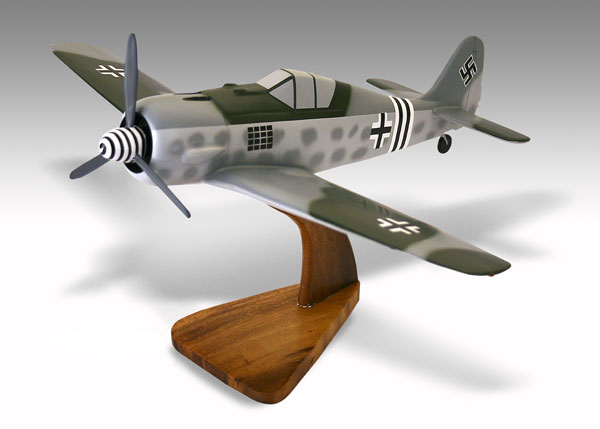
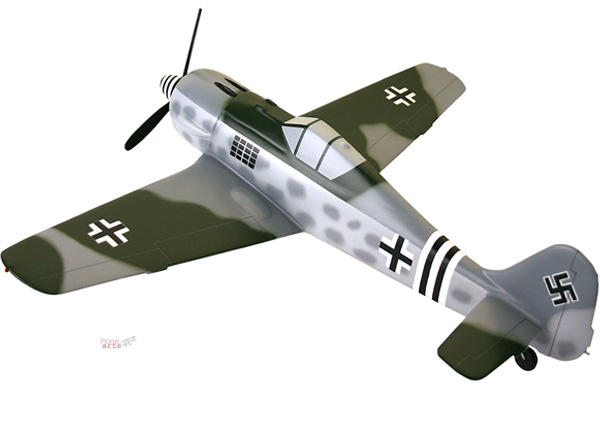
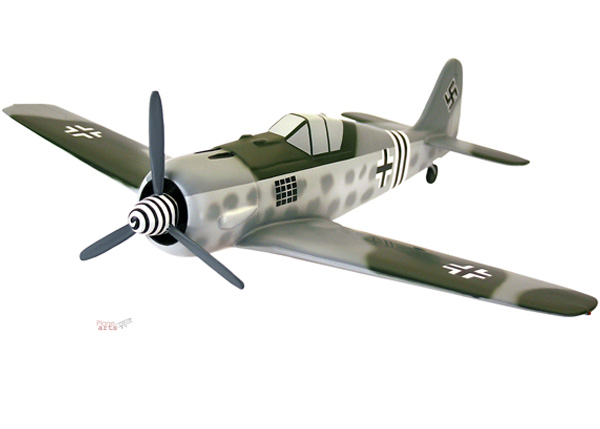
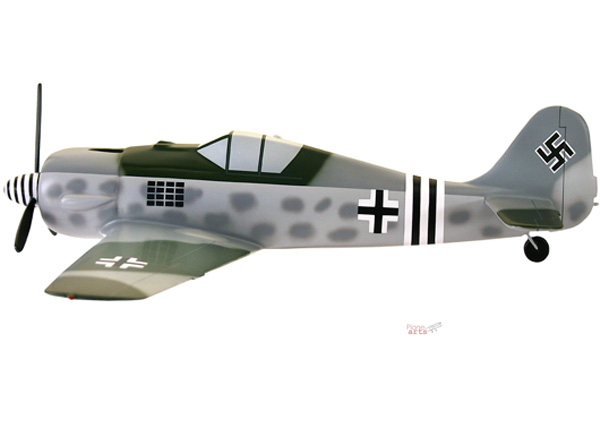
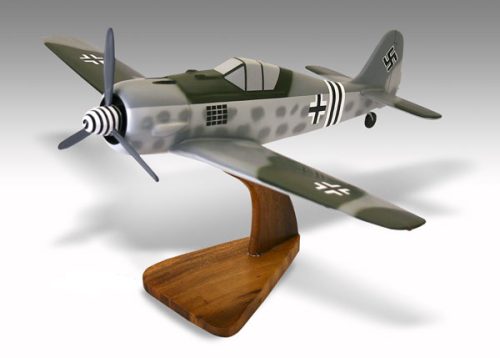
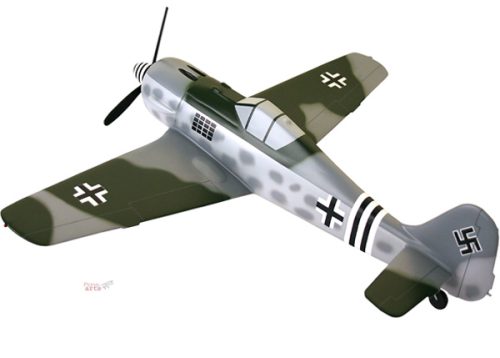
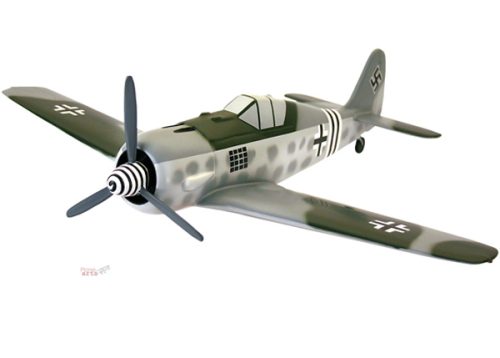
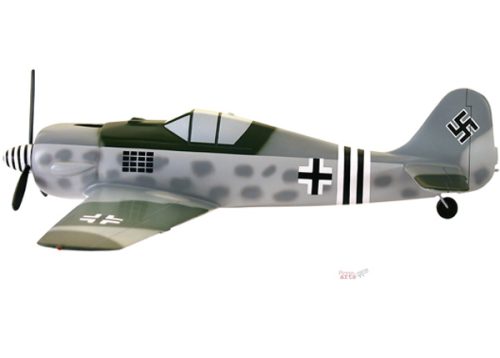
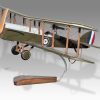
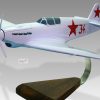
Reviews
There are no reviews yet.